Weight training for women over 50: exercises to try
Why weight training for women over 50 is an essential lifestyle addition and the 6 moves to try
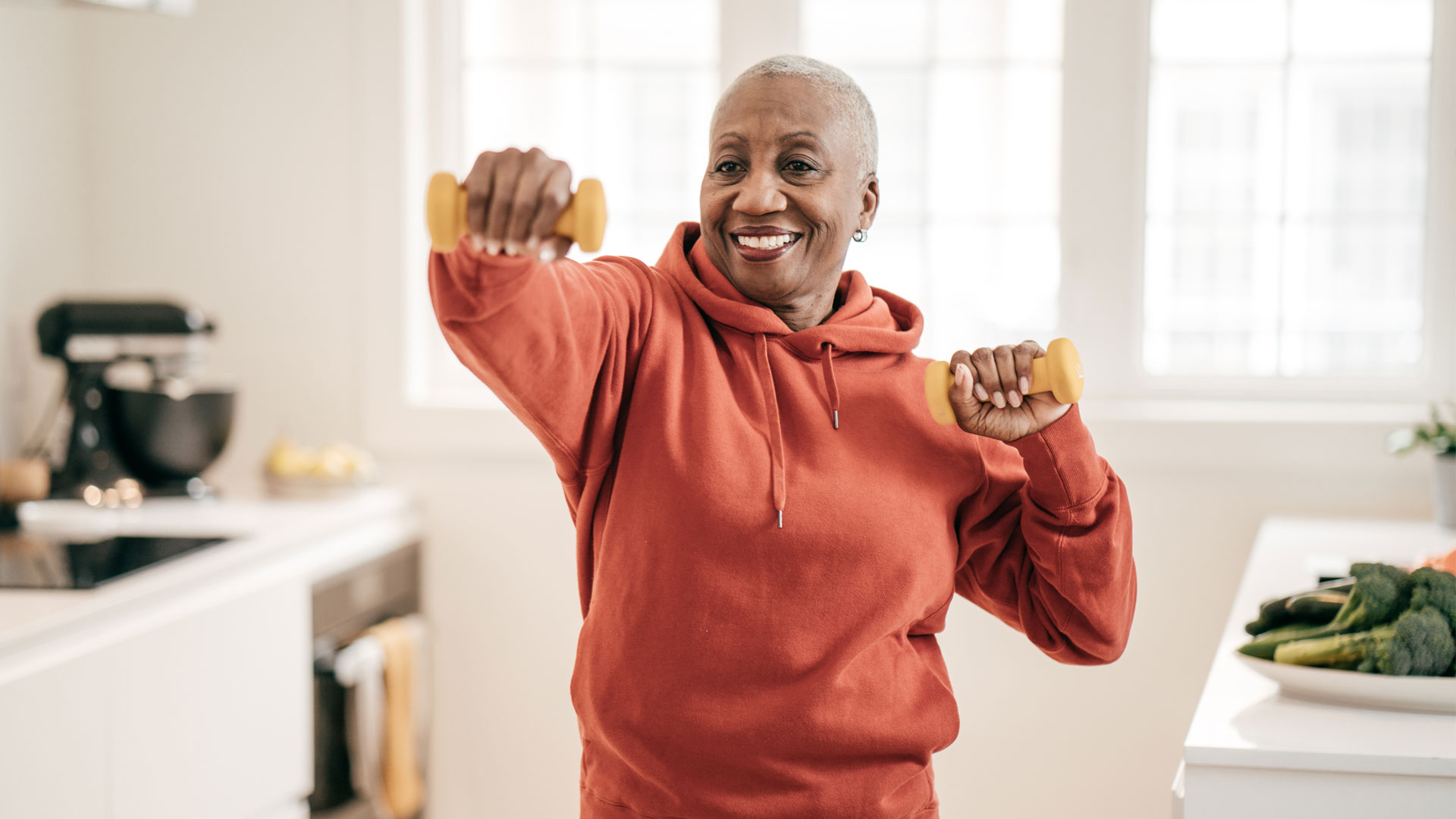
Weight training for women over 50 can be particularly beneficial. Plus, adding resistance-based exercise to your routine can be helpful to protect bone health, something which can deteriorate due to hormonal changes that occur during menopause.
Taking care of your body with the best vitamins for women over 50 and adjusting your training program can make a difference to your overall wellbeing. Weight training for women over 50 doesn’t have to mean hitting the gym every day though and pumping insane amounts of iron.
The moves below, recommended by personal trainer Hayley Fishwick can be done with just your own body weight or can be made more challenging by adding resistance. Whilst items around the house can be used for resistance - such as large filled water bottles and bags of rice - one of the best adjustable dumbbells or even the best kettlebell, can also be useful.
Here, we delve into why exactly weight training for women over 50 is so important, plus, some of the key moves that can help not only maintain and build muscle, but also help with posture, general movement, and fitness.
Weight training for women over 50: what you need to know
As we age, studies show we naturally lose muscle mass and research has confirmed that muscle is often replaced by fat as we get older.
In fact, there’s even research to suggest that after the age of 30, muscle mass is on the decline!
Fishwick told Fit&Well that women’s bones are typically smaller and not as dense as male bones, and as bone mineral density also reduces with age, the risk of fractures from even minor bumps and falls - that the bones would usually withstand - can cause fractures.
Get the Fit&Well Newsletter
Start your week with achievable workout ideas, health tips and wellbeing advice in your inbox.
“Bone mineral density remains fairly stable between the age of 25 and 50 but begins to decline after menopause when estrogen falls,” Fishwick said.
“Strength training can have a beneficial effect on skeletal properties by improving bone mineral density and bone mineral content. Exercises that challenge balance can also help to reduce the risk of falls by improving stability,” explains Fishwick.
Plus, Fishwick goes on to reveal that building lean muscle mass through strength training can also improve weight management which can become more difficult for post-menopausal women.
“When the ovaries cease to produce as much estrogen, some women find that maintaining a healthy body mass index can become more challenging. This is where strength training can be beneficial; increasing lean mass helps the body to become more efficient at using the energy from our food, rather than storing it.”
Staying motivated to exercise can sometimes be a struggle. However, Fishwick says that having a plan to follow and a set amount of time during the week to exercise can help to stay motivated because it takes the thought out of it, which can be a barrier to getting going.
“Keeping a note of exercise difficulty using the rate perceived exertion (RPE) scale 0 to 10 can help to identify improvements over time which can be highly rewarding. I recommend sticking with the same five or six exercises for a period of four to six weeks to get the most benefit and improvements before repeating the process with a new set of exercises.
“Many of my clients find that having a corner at home equipped with an exercise mat, a few weights, and a few resistance bands is ideal because they don’t need to dig the equipment out each time they want to exercise which can be another barrier to getting in their workout,” reveals Fishwick who also adds that quality rest time is important to ensure the body is ready for another session.
“Aim not to train the same body parts on back-to-back days; one to two days rest should be adequate.”
It’s not just exercise we should be considering either, nutrition is just as important.
Fishwick told Fit&Well; “Protein is a really important macronutrient for strengthening the muscles and skeletal system. Women should try to include it in every meal throughout the day because the body can only absorb a limited amount during one sitting.
“I see lots of women who struggle to get protein in at breakfast but authentic Greek yogurt, eggs, scrambled tofu, and fish are good sources of protein to try and include. If you struggle with this you could consider adding a protein powder (preferably low in additives and sweetener) into fruit smoothies too.”
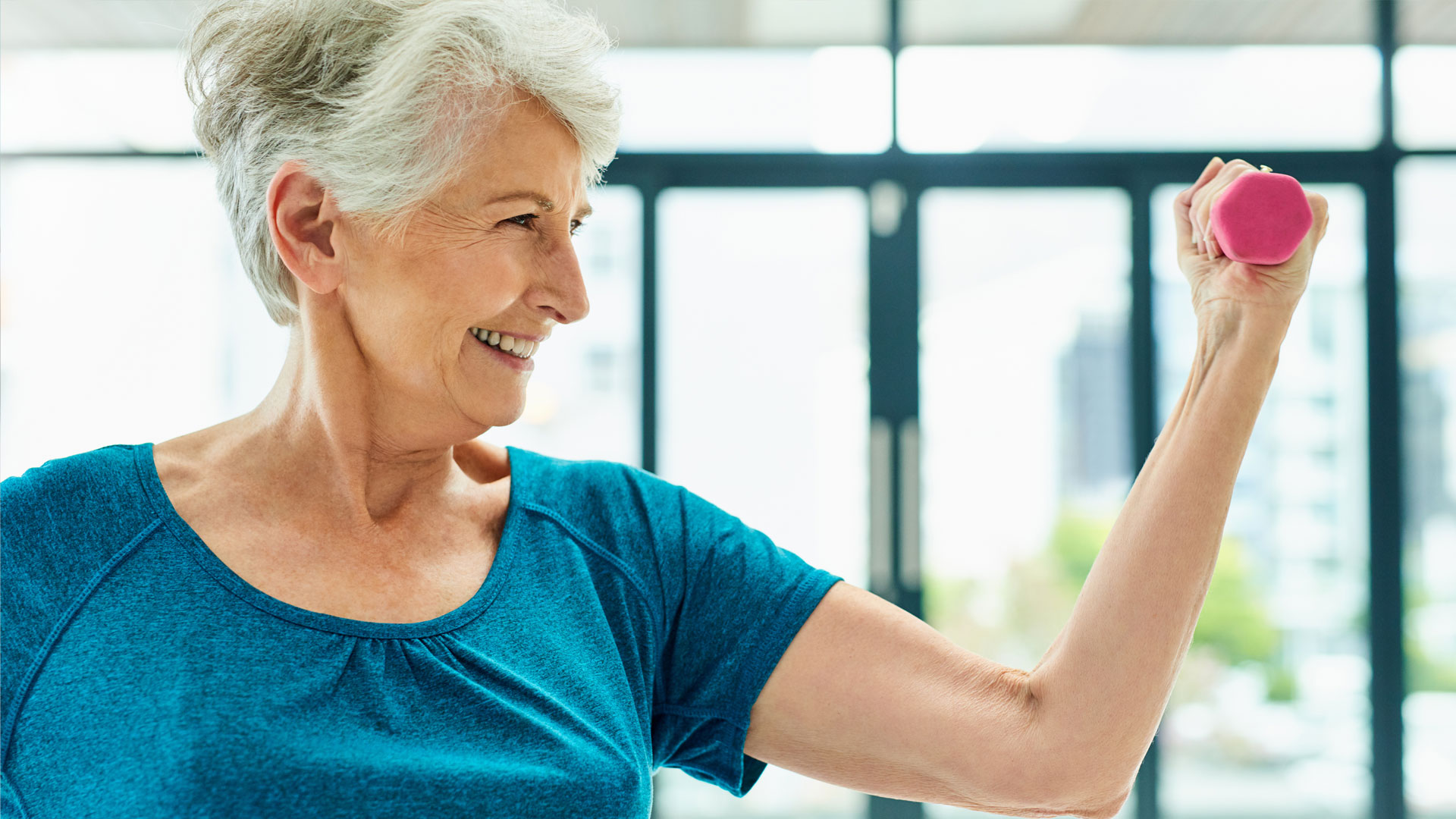
6 weight training exercises for women over 50
Fishwick recommends the below exercises, however, if you have a health condition, check with your doctor for advice before beginning a new exercise program.
“Do not ignore pain and discomfort when exercising - contact your doctor or seek an assessment from a trained physiotherapist who can help with adjustments and rehabilitation to reduce pain and improve function,” she adds.
If you fancy making the exercises below more challenging, slow them down, add weight in the form of a dumbbell or other heavy item and/or group exercises and perform two back to back.
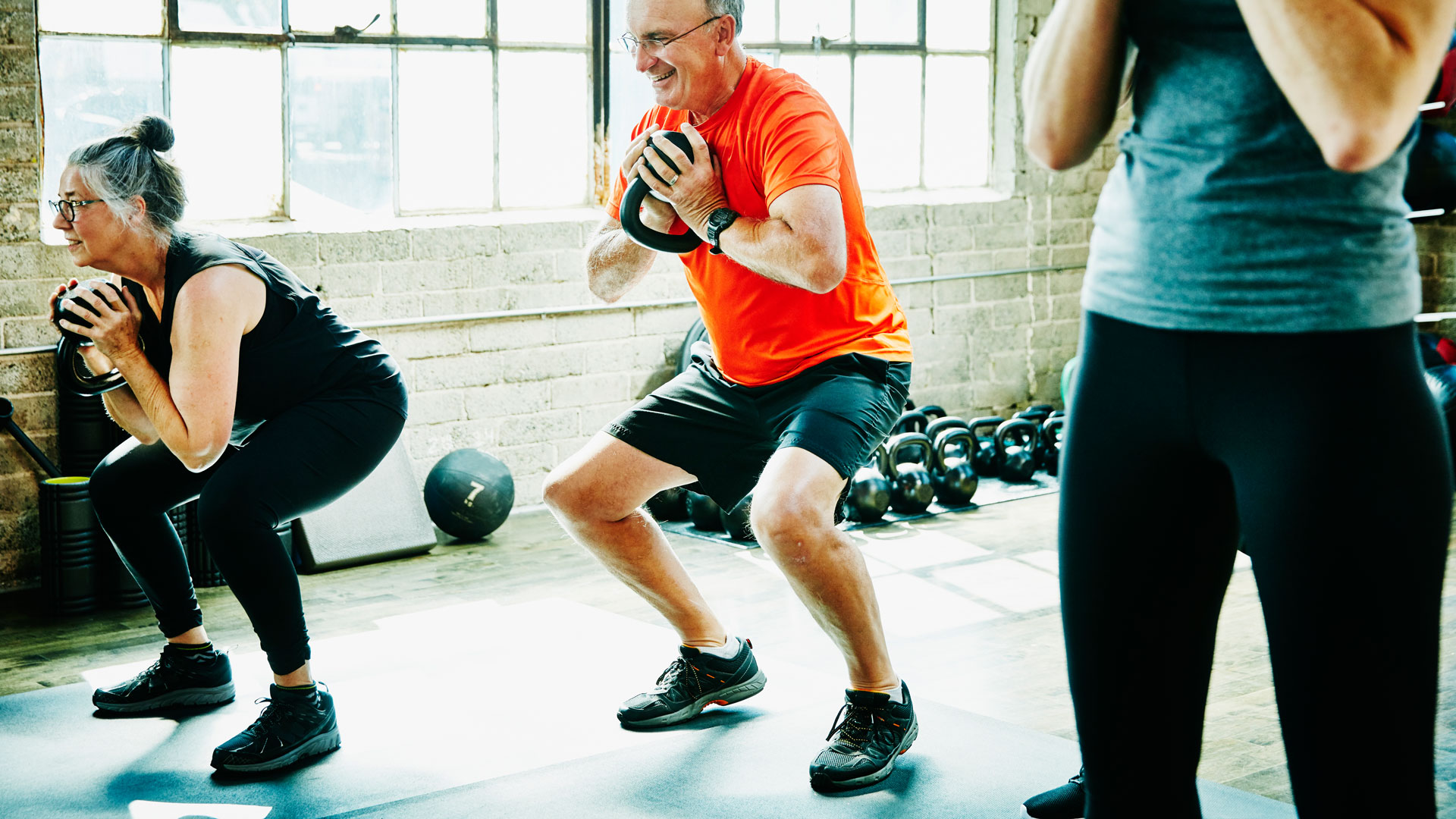
Sit to stand (squat)
This is a great move to target the quads in the upper legs needed for all types of essential movement including getting up from a chair, walking, and even climbing the stairs.
- Use a chair as a target to squat down to; it should be approximately knee height.
- Stand in front of your chair, keep your feet shoulder-width apart, take a breath in and perform the squat movement as if you are going to sit straight down onto the chair. Do this motion over a span of three seconds.
- Aim not to drive the hips back into a hinge but to sit down as directly as you can, keeping your chest up and looking directly forward.
- Exhale and drive the heels into the ground as you come back up to a standing position.
- Repeat eight to 10 times for three to four sets with 90 seconds between sets.
Glute bridge
Great for strengthening the glutes, needed for support when standing and pushing off to walk or run, as well as helping with balance.
- Lie with your back on the floor and your knees bent. Your feet should be just wider than hip-width apart with toes slightly pointed outwards.
- Take a breath in and when you’re ready to start, exhale and drive the heels into the ground, drive the hips upwards over three seconds and lock out at the top, squeezing the glutes.
- Inhale and lower to the floor, pausing just before hips hit the ground, and repeat. Ensure your lower back is nice and flat to the ground throughout.
- Repeat eight to 10 times for three to four sets with 90 seconds between sets.
Split squat (static lunge)
A unilateral exercise that challenges balance, plus it helps to identify and improve any imbalances in strength. It targets the quads, the hamstrings, and the glutes but also challenges the core.
- Start on your weakest side, for most people this will be their none hand-writing side. You only want to work as hard as your weakest side to help reduce imbalances over time.
- To find the perfect starting position kneel onto the knee of the strongest side. Your other foot should be placed in front of you ensuring that both legs are bent in a right ankle. Your hands can be on your hips.
- From this position, you can stand tall to find the starting position.
- Take a breath inwards and start the movement by returning to the low position until your knee is hovering just off the floor; to raise back up ensure your weight is in your front heel and exhale as you push the ground away.
- At the top of the movement do not fully extend the front knee to maintain tension through the quads.
- Repeat six to eight times on each side for three to four sets with a 30-second rest between sets.
Tricep dips
These strengthen the triceps, chest, and shoulders.
- Sit on a bench, step or chair and place your hands on the bench next to your thighs.
- Walk your feet out ahead of you until your feet sit directly under your knees.
- Slide off the platform, keeping your bum close to the chair - this is position one.
- Take a breath inwards and slowly lower your body weight until your elbows are bent at a 90-degree angle. At this point exhale and push the bench away with your palms returning to position 1 and then repeating the movement.
- Ensure the elbows point directly behind you and that you don’t allow the elbows to wing out to the side, particularly as you push back up through the movement.
- Repeat 10 to 12 times for two to three sets with 60 seconds between each set.

Press-ups
An upper body exercise that strengthens the chest, shoulders, and arms, and also targets the core and back muscles. This is useful for improving posture and can help to prevent back pain.
“I suggest starting on a wall and progressing to lower surfaces until you reach the floor, only when your technique feels perfect,” says Fishwick.
- Standing arm's length away from a wall place your hands just outside shoulder-width apart at shoulder height.
- Take a step backward and keep your feet together.
- Engage your core and rotate your shoulders slightly outward to engage your upper back muscles.
- Take a breath inwards and begin bending your elbows to allow your body to fall forwards toward the wall. Ensure the elbows stay close to the body and avoid them splaying out to the sides.
- When your face is close to the wall, exhale and push back into the starting position.
- Repeat six to 10 reps with perfect form for two to three sets. Increase the difficulty only when the technique is perfect. Rest for 90 seconds between sets.
Side plank with reach through
This helps to strengthen the oblique muscles which run down the side of the core. They are important for posture and they support the spine, helping with rotation and posture.
“Your starting point will depend on your current level, but I recommend starting with a lower knee support position and when this feels easy finding a full side plank to perform the movement,” says Fishwick.
- Start in a traditional side plank position ensuring your elbow is directly underneath your shoulder and your lower knee is bent in front of you and can be used as a support.
- Raise the top arm straight above you, then whilst taking a breath in, lower the hand down and reach it underneath your body aiming to bring your upper shoulder parallel with the floor, exhale and return to the starting position with the upper hand straight above you.
- Repeat eight to 10 times on each side for two to three sets, resting for 60 seconds between sets.
Looking for more? Discover how to stay fit over 40, plus learn how to practice yoga over 50.
Lucy is a freelance journalist specializing in health, fitness and lifestyle. She was previously the Health and Fitness Editor across various women's magazines, including Woman&Home, Woman and Woman’s Own as well as Editor of Feel Good You. She has also previously written for titles including Now, Look, Cosmopolitan, GQ, Red and The Sun.
She lives and breathes all things fitness; working out every morning with a mix of running, weights, boxing and long walks. Lucy is a Level 3 personal trainer and teaches classes at various London studios. Plus, she's pre- and post-natal trained and helps new mums get back into fitness after the birth of their baby. Lucy claims that good sleep, plenty of food and a healthy gut (seriously, it's an obsession) are the key to maintaining energy and exercising efficiently. Saying this, she's partial to many classes of champagne and tequila on the rocks whilst out with her friends.
-
 I have bunions, but I can't feel them with these affordable Skechers walking shoes—now 22% off at Zappos
I have bunions, but I can't feel them with these affordable Skechers walking shoes—now 22% off at ZapposDeal A generous toe box makes the Skechers Max Cushioning Arch Fit Areena perfect for wide feet
By Lou Mudge
-
 Can't do a sit-up? A trainer says you should do these chair-based core exercises instead
Can't do a sit-up? A trainer says you should do these chair-based core exercises insteadNo sit-ups or planks
By Jennifer Rizzuto
-
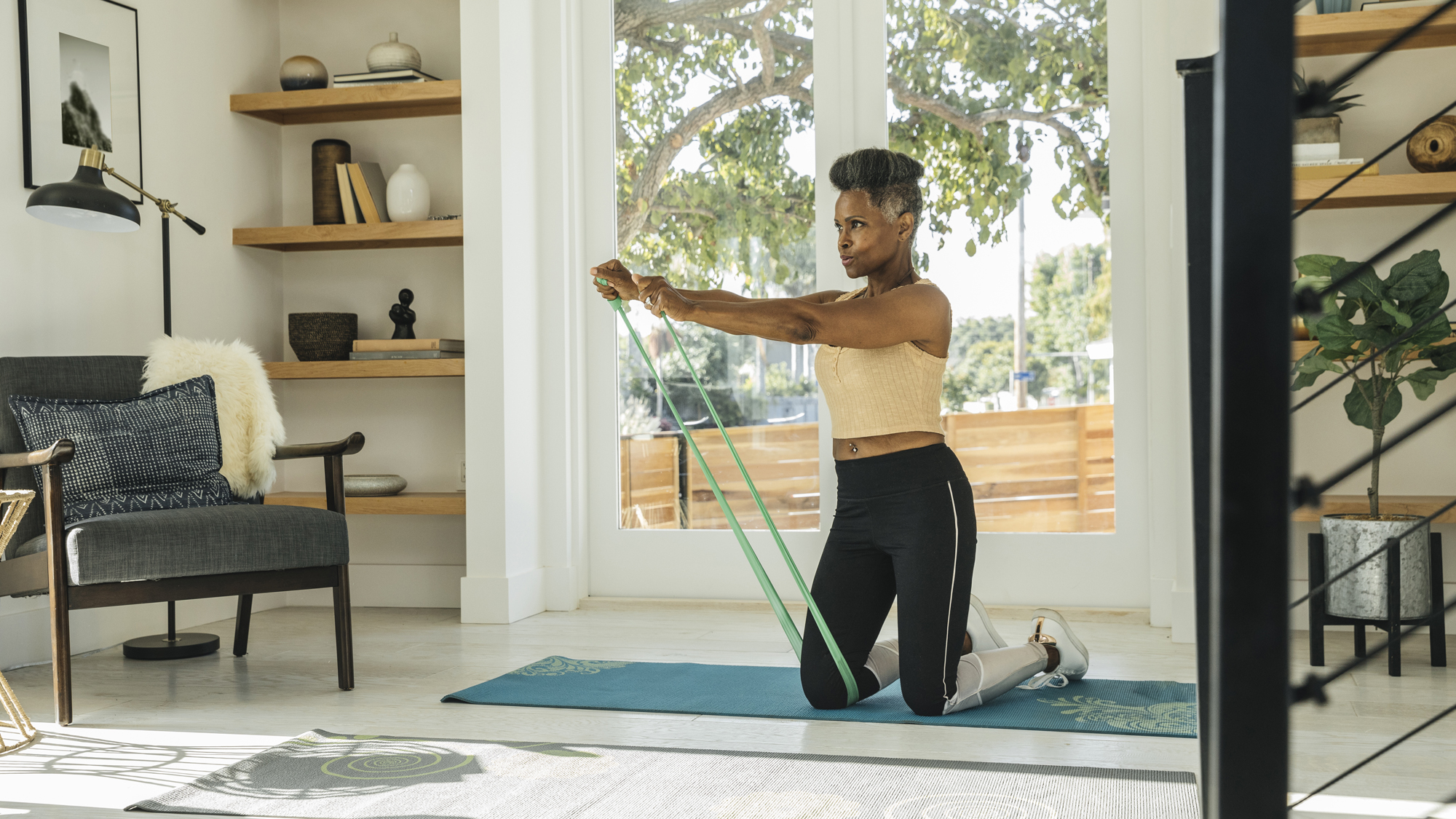 Resistance bands vs weights: which is best for building muscle?
Resistance bands vs weights: which is best for building muscle?Fitness Debating resistance bands vs weights for your strength training workouts? We'll help you decide which to use
By James Frew
-
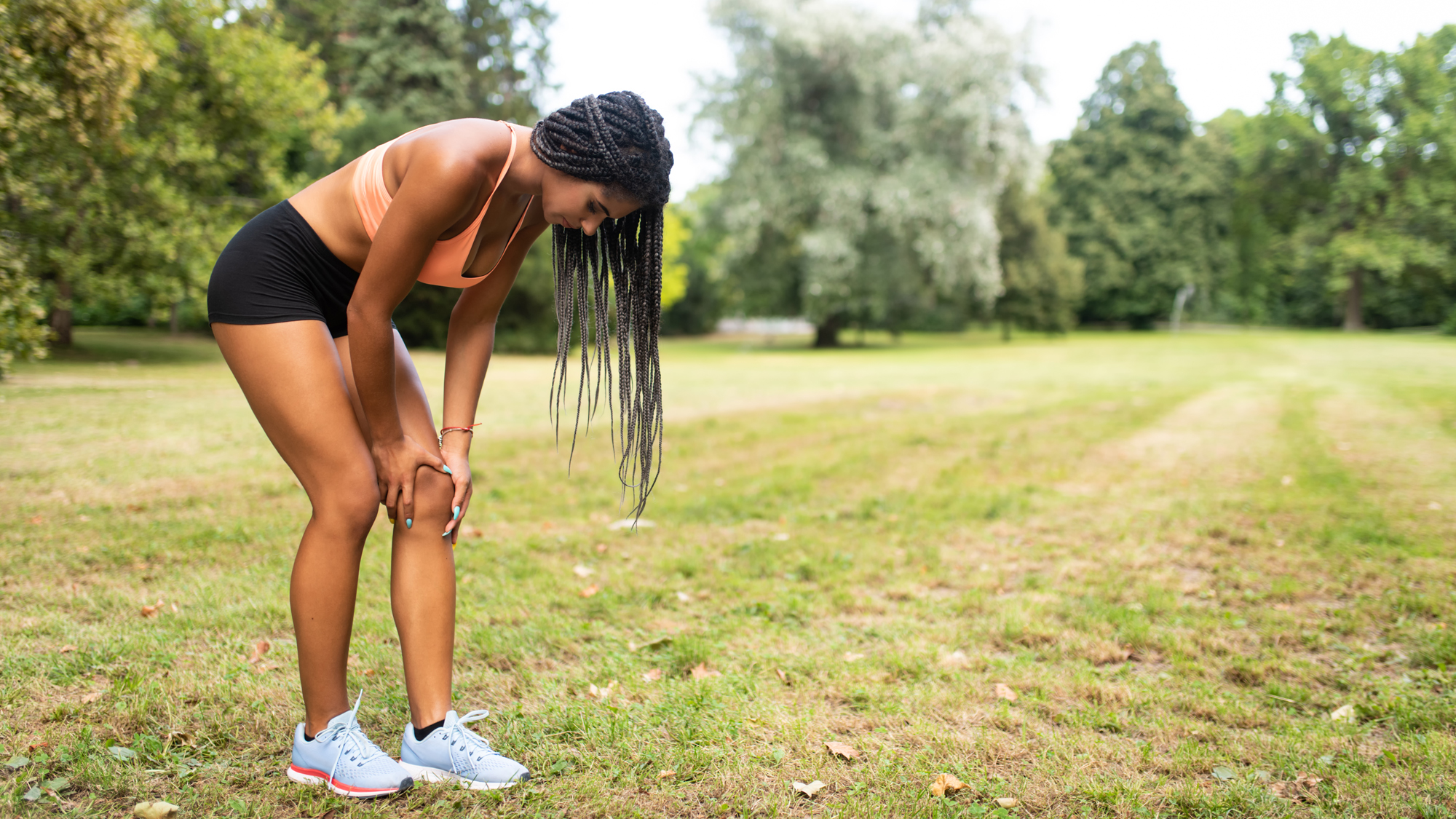 Exercises for knee pain: six moves to reduce joint pain
Exercises for knee pain: six moves to reduce joint painHealth These exercises for knee pain help you stay active without causing injury or discomfort
By Catherine Renton
-
 Best exercise for over 50s
Best exercise for over 50sFitness Get moving safely with the best exercise for over 50s
By Lucy Gornall
-
 Best exercises for belly fat over 60
Best exercises for belly fat over 60Active Aging All the best exercises for belly fat over 60 to help you feel great
By Lucy Gornall
-
 7 exercises from a chair to increase your fitness
7 exercises from a chair to increase your fitnessACTIVE AGING Doing exercises from a chair can help you to increase and maintain fitness, strength, and flexibility. Here’s how
By Joanne Lewsley
-
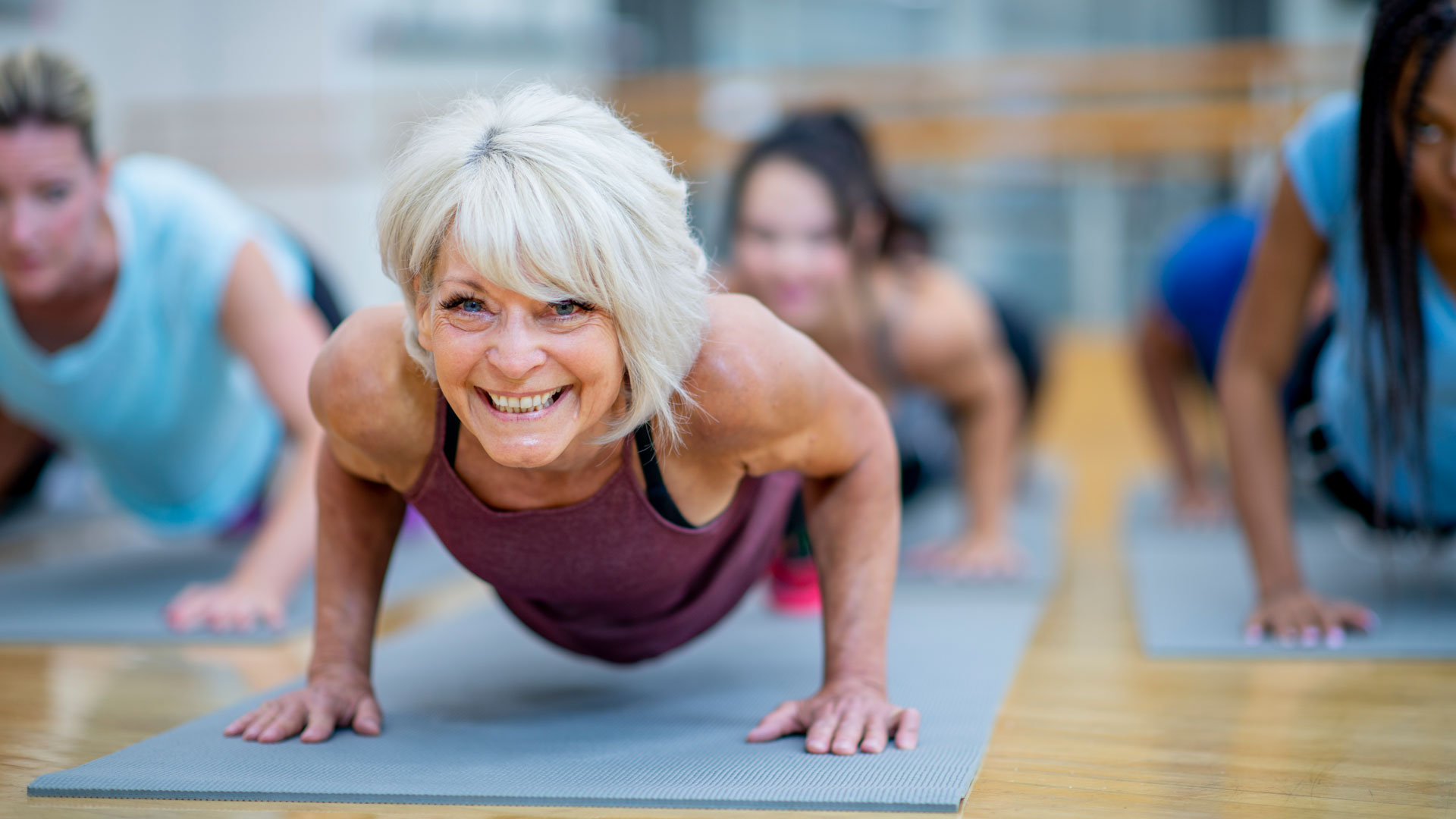 Workouts for women over 50
Workouts for women over 50Active Aging Looking for workouts for women over 50? This no-jumping, low-impact bodyweight workout will keep you mobile and strong
By Maddy Biddulph